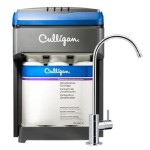Can I Paint My Sink?
Many homeowners consider painting their sinks as a cost-effective way to update their bathrooms or kitchens. While painting a sink is possible, it's crucial to understand the limitations and challenges involved to ensure a successful and durable outcome. The type of sink material plays a significant role in determining the suitability for painting and the longevity of the finish.
Porcelain sinks are a common fixture in many homes. While durable, their smooth, non-porous surface makes it difficult for paint to adhere properly. Special preparation and priming are essential for any chance of success. Even with meticulous preparation, painted porcelain sinks are susceptible to chipping and peeling, especially in high-use areas subject to frequent water exposure and temperature fluctuations.
Ceramic sinks share similar properties with porcelain, presenting the same adhesion challenges. The smooth, glazed surface requires thorough cleaning, sanding, and priming before paint application. Despite proper preparation, painted ceramic sinks tend to wear down faster than other refinishing options, making them less ideal candidates for long-term solutions.
Acrylic sinks offer a slightly better surface for paint adhesion compared to porcelain and ceramic. Their slightly textured surface can provide a better grip for the primer and paint. However, acrylic is still prone to scratches and wear, and painting may not provide a lasting finish, particularly in high-traffic areas.
Cast iron sinks with a porcelain enamel coating present similar challenges as porcelain and ceramic sinks. The smooth surface requires extensive preparation to promote adhesion. However, even with meticulous preparation, the constant exposure to water and temperature changes makes painted finishes susceptible to chipping and peeling. Refinishing with a professional-grade epoxy coating is often a more durable solution for cast iron sinks.
Stainless steel sinks are generally not recommended for painting. The non-porous surface of stainless steel makes it extremely difficult for paint to adhere. Even with specialized primers designed for metal, the paint is likely to peel and chip quickly. Alternative refinishing methods, such as professional resurfacing, are more suitable for stainless steel sinks requiring a facelift.
Choosing the right paint is critical for painting a sink. Epoxy-based paints designed for appliances and countertops are often recommended for sink painting projects due to their durability and resistance to moisture and temperature fluctuations. These paints typically involve a two-part system that requires careful mixing and application. Standard acrylic latex paints are not suitable for sinks due to their poor adhesion and susceptibility to water damage.
Surface preparation is a crucial step regardless of the sink material. Thoroughly cleaning the sink with a degreaser and removing any soap scum or mineral deposits is essential for optimal paint adhesion. Sanding the surface with fine-grit sandpaper creates a slightly roughened texture that helps the primer and paint adhere better. Applying a high-quality primer specifically designed for the sink material further enhances adhesion and provides a uniform base for the paint.
The painting process typically involves multiple thin coats rather than one thick coat. Allowing each coat to dry completely according to the manufacturer's instructions before applying the next coat ensures proper curing and minimizes the risk of drips and runs. A high-quality brush or spray paint applicator designed for use with epoxy paints provides a smoother, more even finish.
Maintaining a painted sink requires careful consideration. Abrasive cleaners and harsh chemicals can damage the painted finish, leading to premature wear and tear. Gentle cleaning with non-abrasive cleaners and sponges is recommended to preserve the painted surface. Avoiding placing hot pots and pans directly on the painted surface helps prevent heat damage and discoloration.
While painting a sink can be a tempting DIY project, it's crucial to weigh the potential drawbacks against the cost savings. The significant preparation involved, the limited lifespan of the painted finish, and the risk of chipping and peeling, particularly in high-use areas, make it a less durable solution compared to other refinishing options. Professional refinishing or replacement might be more suitable for long-term durability and a more polished, professional look.
Before embarking on a sink painting project, consider the type of sink material, the level of use the sink will receive, and the desired longevity of the finish. Proper research, careful preparation, and the use of appropriate materials are essential for achieving a satisfactory outcome. However, recognizing the limitations of painting a sink can help homeowners make informed decisions about the best approach for updating their fixtures.

How To Paint A Sink Diy Bathroom Project Your Budget Will Love

How To Paint A Sink It All Started With

How To Paint A Sink Diy Bathroom Project Your Budget Will Love

How To Paint A Sink It All Started With

How To Paint A Sink Diy Bathroom Project Your Budget Will Love

How To Farmhouse Sink Diy Painting My Stainless White Youtube

How To Paint A Sink It All Started With

How To Reglaze A Sink With Perfect Results

What To Paint A Stainless Steel Sink In Your Kitchen With

How To Paint A Sink Diy Bathroom Project Your Budget Will Love







